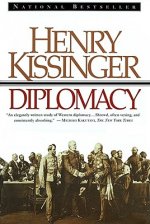
Kód: 04906381
Atlantic Bridges
Autor Janusz Bugajski, Ilona Teleki
In the postD9/11 era of heightened security awareness, conflicting strategies for containing and combating security risks have strained relations between the United States and the European Union despite common goals. These differe ... celý popis
- Jazyk:
 Angličtina
Angličtina - Väzba: Brožovaná
- Počet strán: 294
Nakladateľ: Rowman & Littlefield, 2006
- Viac informácií o knihe

Mohlo by sa vám tiež páčiť
-

Kurshefte Geschichte - Allgemeine Ausgabe
28.67 € -

96 Hours, 1 DVD
9.82 €
Darčekový poukaz: Radosť zaručená
- Darujte poukaz v ľubovoľnej hodnote, a my sa postaráme o zvyšok.
- Poukaz sa vzťahuje na všetky produkty v našej ponuke.
- Elektronický poukaz si vytlačíte z e-mailu a môžete ho ihneď darovať.
- Platnosť poukazu je 12 mesiacov od dátumu vystavenia.
Viac informácií o knihe Atlantic Bridges
Nákupom získate 188 bodov
 Anotácia knihy
Anotácia knihy
In the postD9/11 era of heightened security awareness, conflicting strategies for containing and combating security risks have strained relations between the United States and the European Union despite common goals. These differences between the U.S. and the EU do not signal that the alliance should be discarded, as many fundamental U.S. and European interests are reconcilable_and an uncertain and disunited Europe, distracted and alienated by its internal differences, could become even more problematic for Washington. Instead, to maintain dependable partners within the EU, America should focus greater attention on its new allies in central and eastern Europe (CEE), who will be a guiding force in the continuing development of U.S.-EU relations. The CEE countries have generally exhibited a more pro-U.S. approach than many of their western European neighbors; however, public opinion and political positions are shifting, and in several states opinions are converging with opinions in the older EU countries. Looking toward the UK as a role model, other CEE countries have sought to emulate London's position by avoiding stark choices between the United States and Europe and by successfully combining both orientations in their foreign policies. A dividing line may be emerging between the wider Baltic region and the central European region, a line that is most evident in perceptions of instability along the eastern borders of central and eastern Europe and a sense of a growing threat from Russia. The U.S. must resist the temptation to focus its diplomatic efforts on bilateral agreements with those European countries in closest alignment to it, and instead use these dependable and durable partners among the CEE states to develop more predictable and productive relations with the EU for the sake of long-term stability. To accomplish this strategic objective, Washington needs to refocus the NATO alliance, ensure U.S.- EU complementarity, jointly pursue the expansion of democratic systems, reward its new allies, intensify economic and social interchanges, promote military rebasing, improve public diplomacy, defuse any current or latent controversies, and more effectively engage emerging allies throughout central and eastern Europe. Published in cooperation with the Center for Strategic & International Studies.
 Parametre knihy
Parametre knihy
Zaradenie knihy Knihy po anglicky Society & social sciences Politics & government International relations
75.99 €
- Celý názov: Atlantic Bridges
- Podnázov: America's New European Allies
- Autor: Janusz Bugajski, Ilona Teleki
- Jazyk:
 Angličtina
Angličtina - Väzba: Brožovaná
- Počet strán: 294
- EAN: 9780742549111
- ISBN: 0742549119
- ID: 04906381
- Nakladateľ: Rowman & Littlefield
- Hmotnosť: 431 g
- Rozmery: 231 × 154 × 22 mm
- Dátum vydania: 13. November 2006
Obľúbené z iného súdka
-

Prisoners of Geography
11.15 € -23 % -

World Order
11.36 € -24 % -

Clash of Civilizations and the Remaking of World Order
16.79 € -15 % -

Tragedy of Great Power Politics
21.50 € -9 % -

Rethinking Fiscal Policy after the Crisis
169.10 € -

Chaos in the Liberal Order
25.29 € -24 % -

Governing the World
14.43 € -23 % -

Geopolitics and Geoculture
32.87 € -4 % -

Diplomacy
16.89 € -24 % -

Righteous Victims
20.37 € -19 % -

On Palestine
10.64 € -21 % -

Legacy of Ashes
17.91 € -14 % -

Who Rules the World?
14.23 € -18 % -

Image and Reality of the Israel-Palestine Conflict
31.44 € -13 % -

Tao Of Spycraft
43.01 € -

Grand Chessboard
22.73 € -

Who Rules the World?
11.26 € -25 % -

Hundred-Year Marathon
16.58 € -22 % -

Adults In The Room
13.10 € -22 % -

Cold War
16.89 € -22 % -

Planetary Cycles Mundane Astrology
19.96 € -

America's Secret War
15.76 € -9 % -

My Nationalist Pony
36.86 € -

PostCapitalism
10.95 € -24 % -

Lords of the Desert
9.62 € -23 % -

Drone Theory
10.13 € -22 % -

Romania and the European Union
41.47 € -

Human Rights and European Law
108.87 € -

Second Chance
29.39 € -

Diplomatic Theory from Machiavelli to Kissinger
214.68 € -

Rise and Kill First
16.48 € -24 % -

The Spy and the Traitor
10.95 € -24 % -

PEACE TO END ALL PEACE
21.09 € -23 % -

Dead Aid
16.69 € -9 % -

Evolution of Cooperation
19.14 € -

World Order
16.48 € -3 % -

Countdown to Zero Day
16.89 € -17 % -

Political Order and Political Decay
15.25 € -23 % -

Strategic Vision
16.17 € -21 % -

Secret World
18.32 € -24 % -

Naked Diplomat
14.43 € -23 % -

After the Empire
15.97 € -

Understanding the Intelligence Cycle
78.14 € -

Revenge of Geography
18.43 € -21 % -

Oxford IB Diploma Programme: Global Politics Course Book
68.51 € -

Dawn of Eurasia
12.28 € -23 % -

Emergency Sex (And Other Desperate Measures)
16.58 € -23 % -

Diplomatic Protocol
40.35 € -

How Spies Think
10.95 € -24 %
Osobný odber Bratislava a 2642 dalších
Copyright ©2008-24 najlacnejsie-knihy.sk Všetky práva vyhradenéSúkromieCookies



 21 miliónov titulov
21 miliónov titulov Vrátenie do mesiaca
Vrátenie do mesiaca 02/210 210 99 (8-15.30h)
02/210 210 99 (8-15.30h)